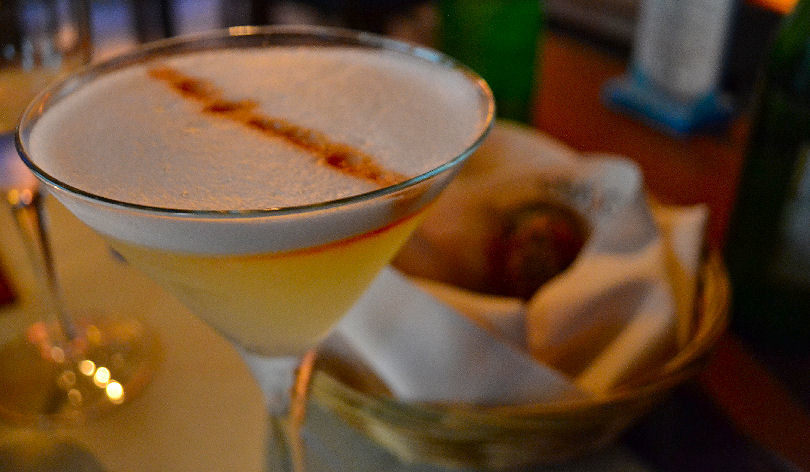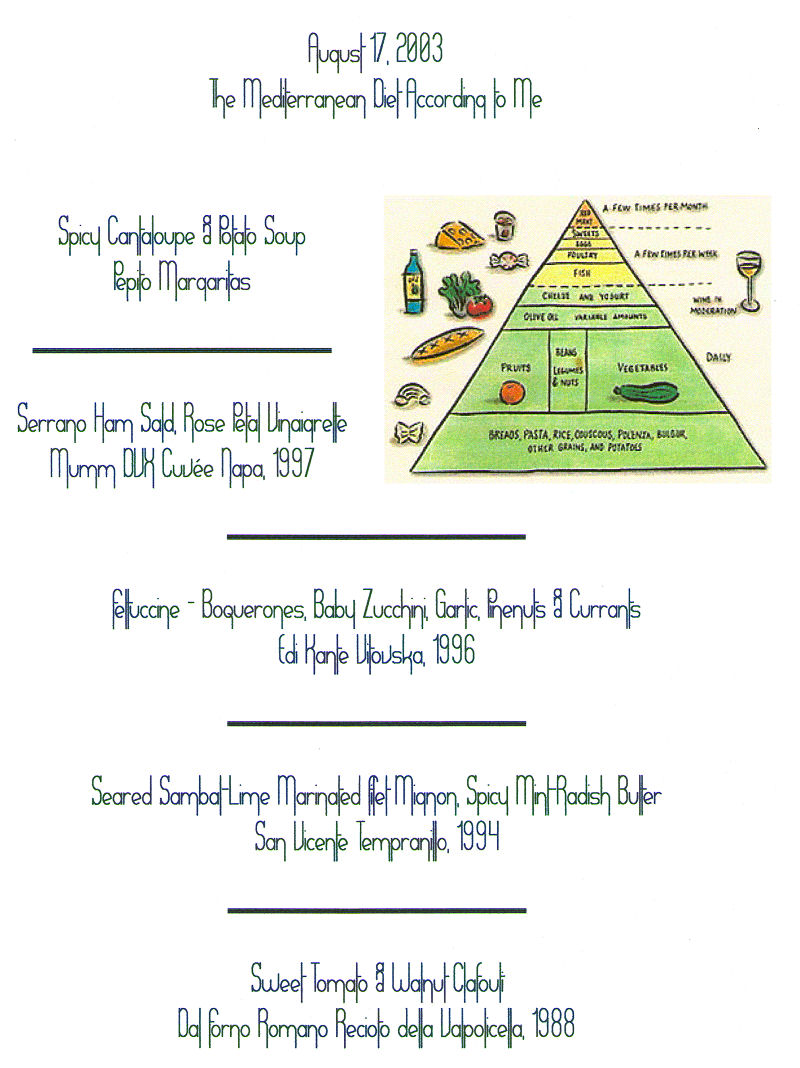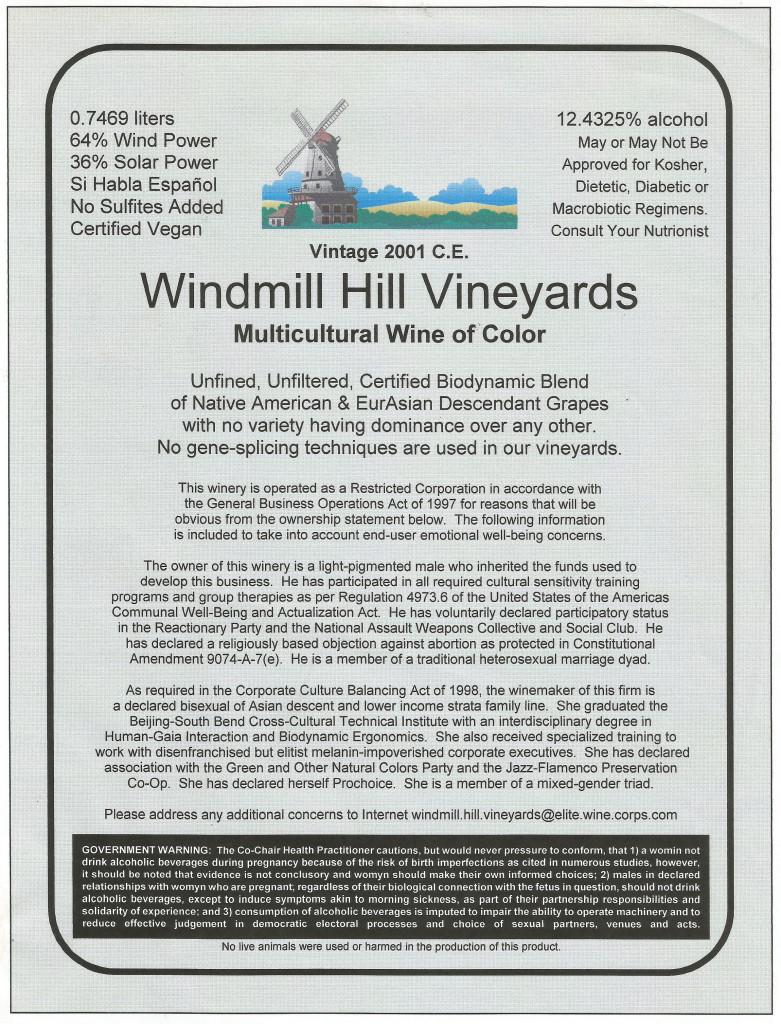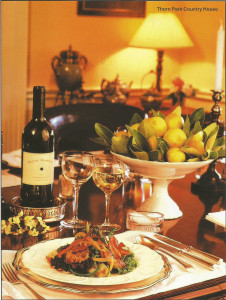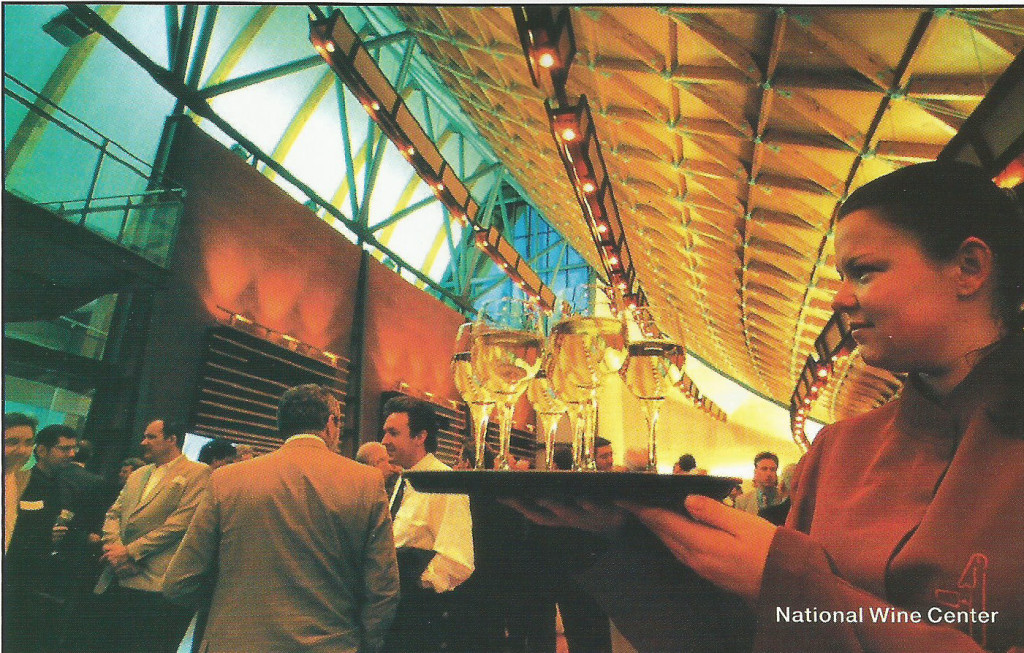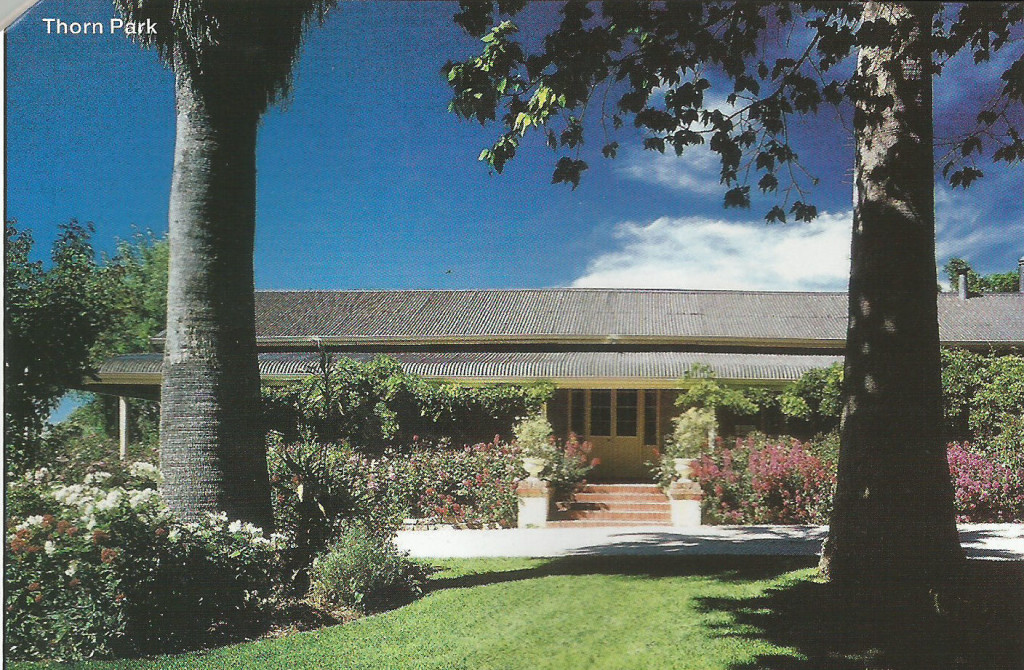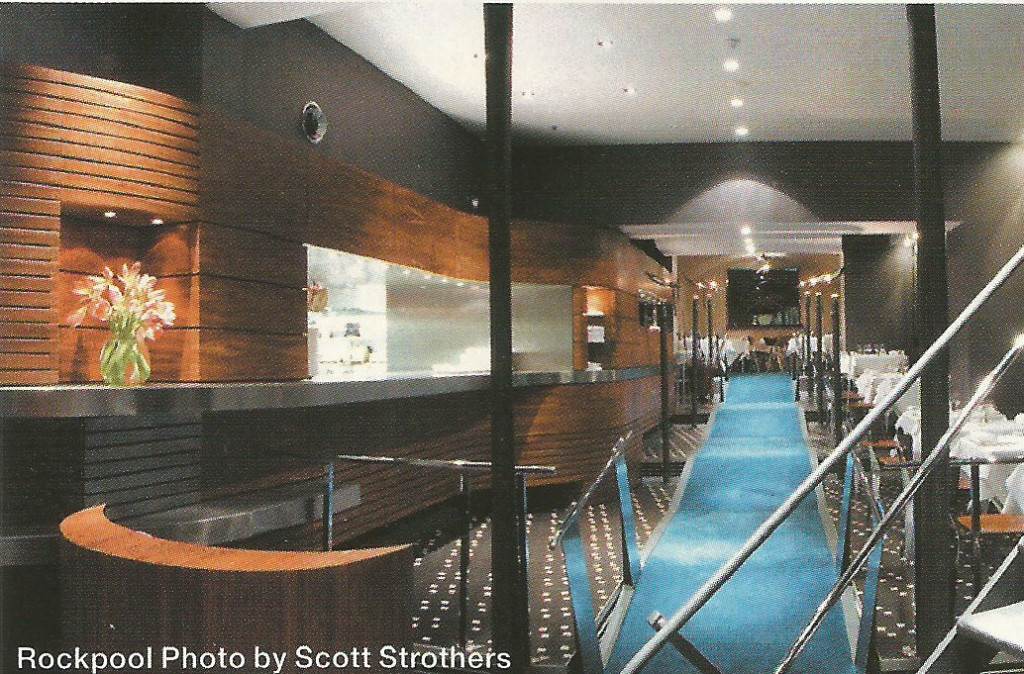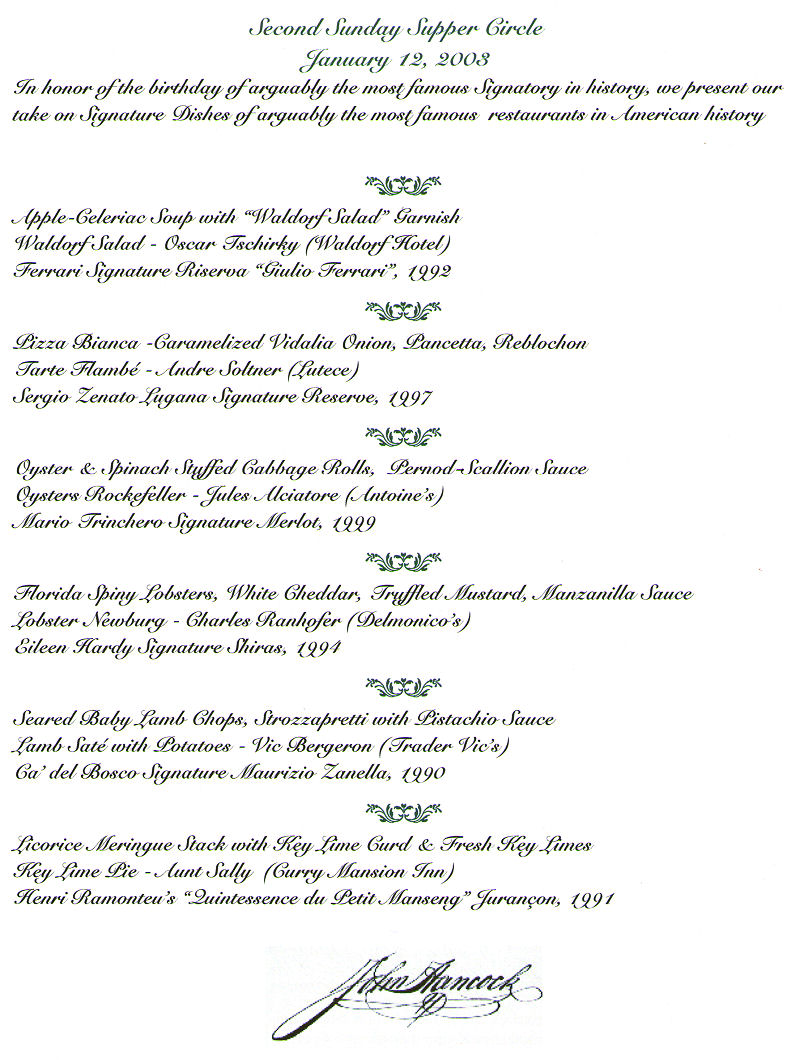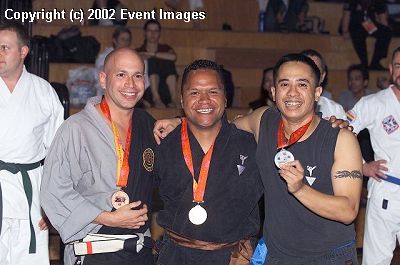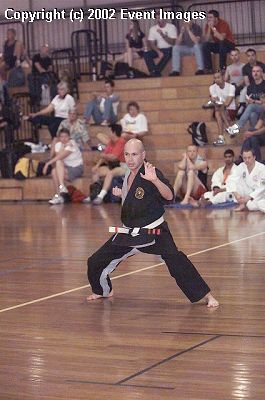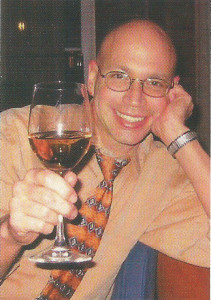World Eats – Brooklyn
Issue 19 – November 2003
In the late 1970s, the show Welcome Back Kotter used to open up with a sign that said “Welcome to Brooklyn, the 4th largest city in America”. In 1982, when I first moved to New York (and lived in Brooklyn) Mark-Linn Baker in My Favorite Year refers to Brooklyn as a far away country. More recently, rumors of worthwhile dining venues reached us on the isle of Manhattan, and we ventured back to explore.
To paraphrase Douglas Adams, Brooklyn is big. I mean it’s really big. At 72.5 square miles, with a population of 2.5 million, and divided into numerous neighborhoods, some large enough to be small towns themselves, there’s plenty of room for some good restaurants. Prior to the 1600s, virtually this entire city, a county in itself (Kings County), was marshland and woodland. Over three centuries it was gradually built up and populated, until becoming an official borough of New York City on January 1, 1898.
Since most visitors to New York City, and most Manhattan dwellers, have a somewhat dim view of “the outer boroughs”, I decided not to venture to far from those shores. Picking the neighborhoods that are close by might mean I could actually entice someone to cross the East River and sit down to dine.
The area known as Park Slope remained rural until the 1860s when adjacent Prospect Park was completed. In 1883, with the opening of the Brooklyn Bridge, building took off in this neighborhood, with beautiful brownstone row houses lining the streets. In the 1970s, this area became the new “hotspot” to move to, especially for the gay and lesbian community, a trend that continues to this day.
Our first venue of choice is a small French bistro, Moutarde. Frenchman Arnaud Giberszcajn noted that there was a severe lack of bistros in the neighborhood and opened up this now popular spot in early 2002. Located along the main stretch of Fifth Avenue, Moutarde is a beautifully appointed little bôite. Tile work and carved wood adorn the walls, a floor to ceiling stocked bar dominates the front, and the owners have added delightful touches – like a huge baker’s rack for bread service in the center and an antique cappucino machine in the rear. In fitting with the name, Moutarde specializes in the omnipresent condiment mustard. At Moutarde, however, you won’t find it on a hot dog. It shows up in many guises – in an adorable crudité set on an artist’s palette with each of the divots holding a different style – from sweet honey-mustard to fiery hot wasabi-mustard. Standout dishes include a layered tartare of salmon, tuna, salmon roe, caviar, and mustard infused crème fraîche; sautéed skate in balsamic and caper sauce; and pork chops with apples and cabbage. Our waiter described the tarte tatin as the best he’s ever had outside of France, and we had to agree. Moutarde, 239 Fifth Avenue. Tel: 718-623-3600. N or R train to Union Street/Fourth Avenue stop, walk one block east to Fifth Avenue and one block south along Fifth. Cash, Visa & Mastercard only.
Developed in the mid-1800s after ferry service was established from Manhattan, Boerum Hill is a neighborhood that is contiguous with the downtown Brooklyn area. Originally named after the colonial farm of a local Dutch family, over the last decade this area has become a trendy spot to open avant-garde restaurants. You can find an array of these at Smith Street’s multi-block restaurant row.
There we found Restaurant Saul, overseen by chef/owner Saul Bolton, formerly of the Le Bernardin kitchen. Brick walls, a backlit wooden bar, tasteful floral arrangements and comfortable seating are a big attraction in this fifty seat space. It is also obvious that attention to detail is appreciated here; every menu has a cover with individually drawn sketches, and diners are illumined by subtle, flattering lighting. More importantly, conscientiousness pours over into the dining experience. I was initially drawn here after being told that it had one of the better wine lists in Brooklyn. While not lengthy, it is well thought out and quite fairly priced, as is the menu. Starting with a beet tartare that was everything it should be, dinner proceeded through a range of tasty delights. Favorites were the duck confit with a refreshing bean and vegetable gordita on the side and an arctic char seared to perfection. The lemon tart for dessert was just lemony enough, the cheesecake was unusual but quite good. Restaurant Saul, 140 Smith Street. Tel: 718-935-9844. F train to Bergen Street/Smith Street stop, go out at the Bergen Street end, walk around the corner onto Smith and the restaurant is right there. Cash and major credit cards.
While it was founded in 1927, Williamsburg did not become a residential neighborhood until the opening of the eponymous bridge in 1903. Quickly becoming densely overpopulated by the “working class”, it has always been a somewhat “suspect” area, but the ease of access from Manhattan (first and second subway stops on the 14th street cross-town L), not to mention the bridge, made it one of the first expansion neighborhoods when the East Village became trendy enough to overprice itself. It has also established itself as home to some delightful casual restaurants, such as Fada, on Driggs Avenue.
Visiting on a Monday evening, we found the place packed to the rafters with diners and drinkers alike. With a limited menu, limited wine list, and limited service, one would think to dine here would require a mindset of willingness to accept mediocrity. Luckily, Fada rises above that, and despite those limitations, delivers quality food at a good price. To our surprise, Fada’s escargots in garlic sauce did not consist of half a dozen small specimens to be picked out of the shell, but more than two dozen deliciously garlicky sea dwellers already removed from the shell, ready to be quickly and eagerly devoured. A charcuterie platter was graced by a divine selection of meats. The coq au vin and cassoulet were exactly as the gods of French cuisine intended them. After an inexpensive, but perfectly drinkable bottle of wine, we left quite satisfied for less than only one of us would have spent on the other side of the river. Fada, 530 Driggs Avenue. Tel: 718-388-6607. L train to Bedford Avenue and get out at the Driggs Avenue end, walk north one block to North 8th Street. Cash and major credit cards.
We returned to another section of Park Slope to drop in on Darrin Siegfried’s hot new wine shop, Red, White & Bubbly – a must the next time you’re wandering the “strip” along 5th Avenue. He strongly recommended a visit to Bistro Saint Marks. The chef, Johannes Sanzin, is a David Bouley protégé who struck out on his own a few years ago and has had several semi-successful casual spots in Manhattan. It seems that here in Brooklyn he has found his niche.
Sanzin turns out some of the more creative French-based cuisine I’ve seen in the last few years, and dish after dish was beautifully presented, flavorful, and satisfying. Some favorites included a mushroom salad with herbs, asian pear and walnuts; red snapper with Roquefort sauce; caramelized scallops with tagliatelle and a tomato-coriander sauce; and for dessert a strawberry mascarpone genoise. Bistro Saint Marks also offers some great special evenings, including a four-course tasting menu for a mere $25 on Mondays, a seafood and raw bar on Tuesdays, and a selection of steaks on Wednesdays. Bistro Saint Marks, 76 St. Mark’s Avenue (at 6th Avenue). Tel: 718-857-8600. Q train to 7th Avenue/Flatbush Avenue stop, walk one block north along Flatbush to 6th Avenue, the restaurant is on the little triangle formed by all three streets.
The area known as Fort Greene was named after Revolutionary War general Nathaniel Greene. Home to beautiful brownstones and expansive parks, the neighborhood is probably best known as the home of Pratt Institute and the Brooklyn Academy of Music.
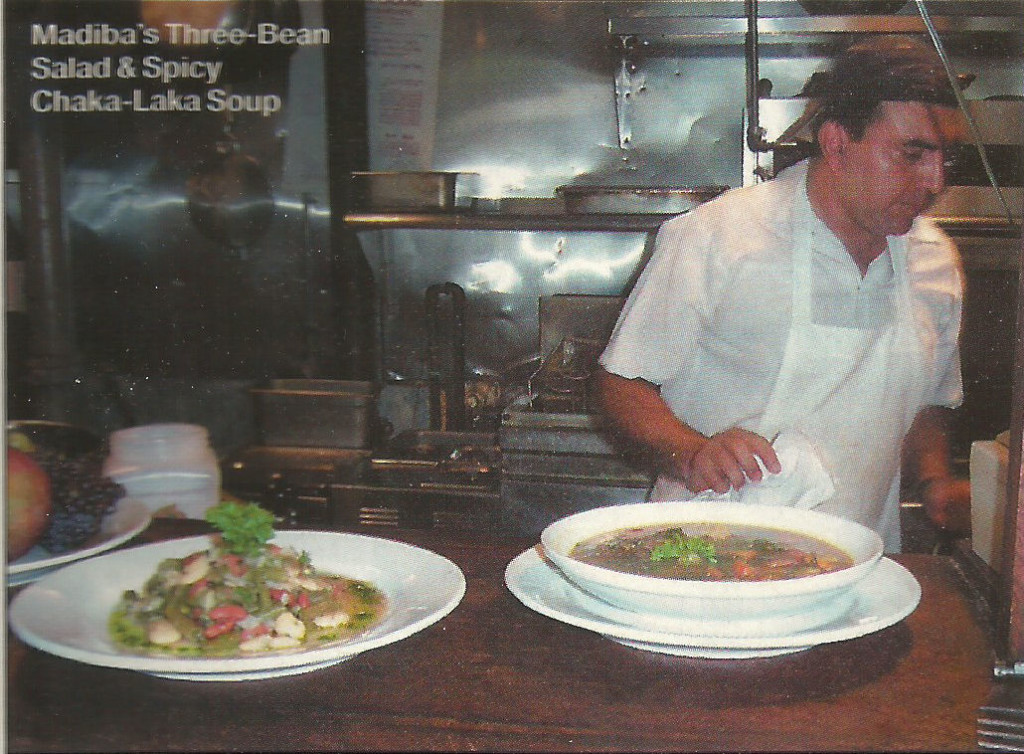 Billing itself as “New York’s only South African restaurant”, Madiba has food that is worthy of a trip across the Atlantic. The decor can only be described as “eclectic” – an odd, unmatched collection of art, bric-a-brac, and vibrant colors. Service is warm, friendly, efficient, and probably crosses a few personal boundaries – but that’s half the fun. Much like the decor, the menu seems to be an unexpected collection of oddities. A platter of bean salad, potato salad, and Greek salad, while delicious, seems strangely out of place among dishes like a “safari platter” of dried fruits, nuts and meats, but still worth a taste. Particularly good choices include an appetizer of chilled curried fish with pumpkin fritters, oxtail stew, and what may be the best barbecued ribs in all of New York City. Don’t mind the claim that they’re basted with “monkey gland” – it’s a traditional sauce for barbecuing that doesn’t involve primates. A butterscotchy Malva Pudding may not have quite brought on the orgasmic delight promised by our waitress, but it was a great finish to a fun meal. Madiba, 195 DeKalb Avenue. Tel: 718-855-9190, 2 or 3 train to Fulton Mall, or Q train to DeKalb/Flatbush, walk east along DeKalb to the restaurant, approximately 8-10 minutes. Cash and major credit cards. www.madibaweb.com
Billing itself as “New York’s only South African restaurant”, Madiba has food that is worthy of a trip across the Atlantic. The decor can only be described as “eclectic” – an odd, unmatched collection of art, bric-a-brac, and vibrant colors. Service is warm, friendly, efficient, and probably crosses a few personal boundaries – but that’s half the fun. Much like the decor, the menu seems to be an unexpected collection of oddities. A platter of bean salad, potato salad, and Greek salad, while delicious, seems strangely out of place among dishes like a “safari platter” of dried fruits, nuts and meats, but still worth a taste. Particularly good choices include an appetizer of chilled curried fish with pumpkin fritters, oxtail stew, and what may be the best barbecued ribs in all of New York City. Don’t mind the claim that they’re basted with “monkey gland” – it’s a traditional sauce for barbecuing that doesn’t involve primates. A butterscotchy Malva Pudding may not have quite brought on the orgasmic delight promised by our waitress, but it was a great finish to a fun meal. Madiba, 195 DeKalb Avenue. Tel: 718-855-9190, 2 or 3 train to Fulton Mall, or Q train to DeKalb/Flatbush, walk east along DeKalb to the restaurant, approximately 8-10 minutes. Cash and major credit cards. www.madibaweb.com
Passport magazine is a relatively new, ultra-slick, ultra-hip gay travel magazine. My friends Don Tuthill and Robert Adams, respectively the publisher and editor-in-chief, who have owned and run QSF magazine for many years, launched this publication recently. It has received industry accolades. They asked me to come along and write the occasional article for this venture as well.
